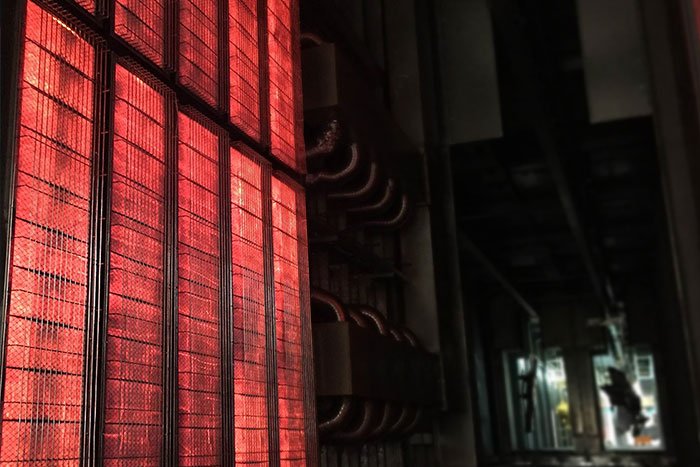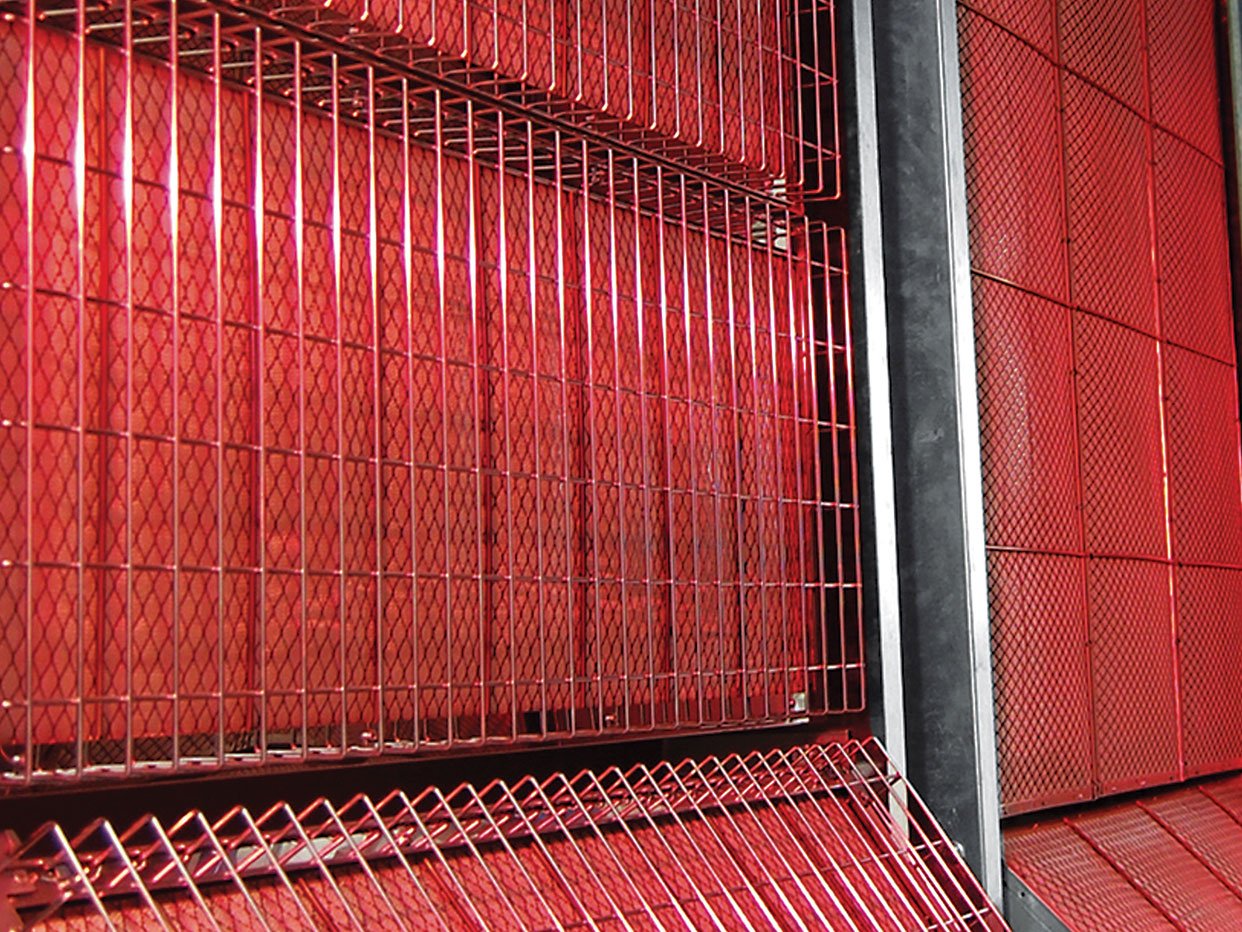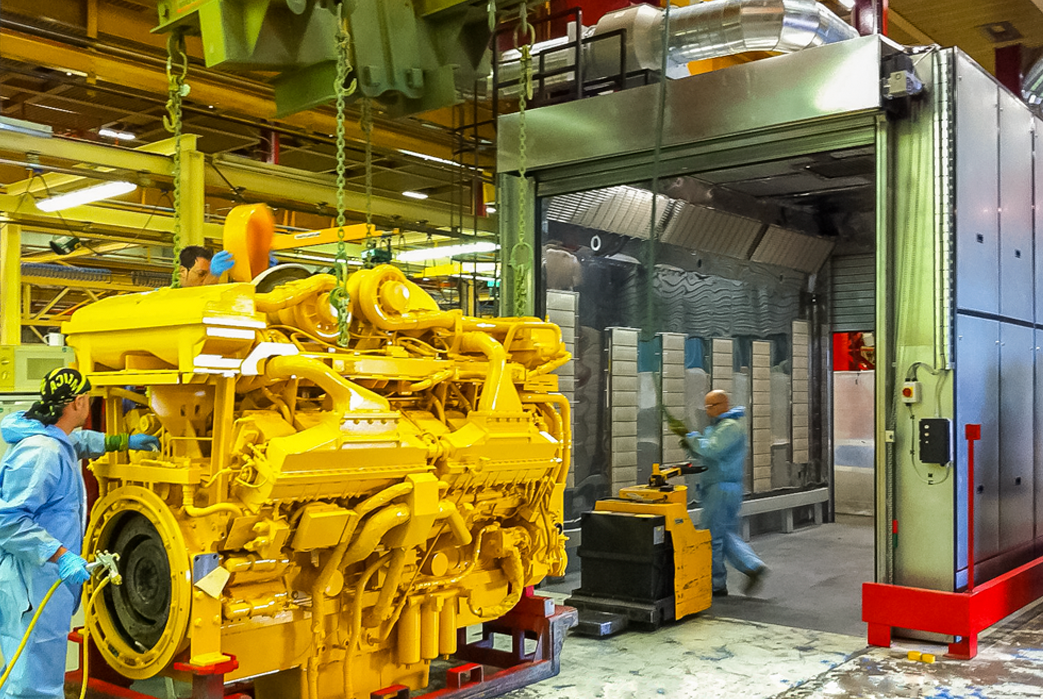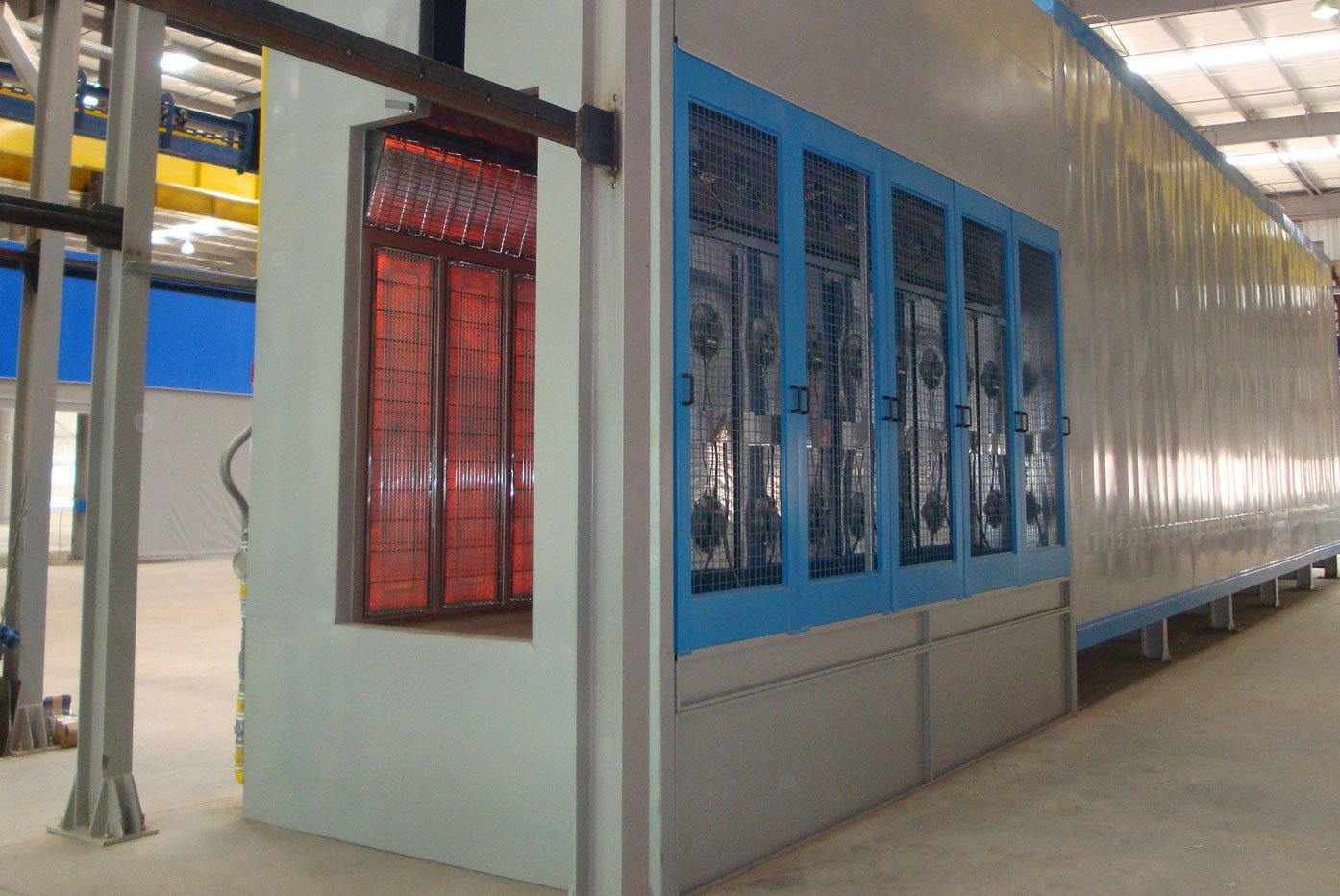
Infragas® manufactures infrared catalytic gas heaters operating with GAS CATALYTIC OXIDATION.
The heat is emitted as INFRARED ENERGY.
Our catalytic technology enables the oven manufacturers to build reliable and compact systems, with easy maintenance, low operating costs and quick treatments with respect for the environment. The gas oxidation is a chemical reaction activated by a catalyst whose characteristics are not altered over time. The reaction occurs between the feeding gas (combustible) that flows inside the heater and the oxygen of the surrounding atmosphere (combustive agent): the contact of these two elements, through the catalytic pad duly pre-heated, generates a gas oxidation with emission of THERMAL ENERGY.
The reaction is EXOTHERMIC and develops heat through INFRARED RAYS (IR).
What are its significant advantages?

FLAMELESS OPERATION
High quality gas oxidation in total ABSENCE OF FLAME, as the catalyst activates the oxidation of the combustible at a temperature lower than its ignition temperature. SAFE OPERATION with consequent possibility of application in POTENTIALLY EXPLOSIVE ATMOSPHERES (ATEX and FM certified heaters are available).
QUICK START-UP
Infragas® Research & Development Department has designed a catalytic heater with a high performance catalyst able to start-up in a very quick time, shortening the pre-heating phase and consequently accelerating the treatment time, with relevant ENERGY SAVING.
Infragas® infrared heaters start-up in 10 minutes: it is the shortest pre-heating phase of all traditional catalytic systems present in the international market, assuming the same electric power involved in the start-up.
Absence of CO, NOx and unburnt hydrocarbons (HC)
Catalytic gas oxidation generates exclusively carbon dioxide (CO2) and water vapour (H2O) without emission of carbon monoxide (CO), nitrogen oxides (NOx) and unburnt hydrocarbons (HC). ENVIRONMENT RESPECT.

MODULATING TEMPERATURE
The temperature of the catalyst surface can be modulated by acting on the pressure of the gas: the infrared rays wavelength is adjustable from medium to long. SPECIFIC TREATMENTS.
VOCs ABATEMENT
With Infragas® catalytic technology the VOCs (Volatile Organic Compounds), the solvents, the alcohols and many other polluting chemical compounds are decomposed at molecular level and transformed for the most part in water vapor (H2O) and carbon dioxide (CO2) as soon as they come in contact with the catalyst surface.
ENVIRONMENT POLLUTION REDUCTION and SOLVENTS ODOUR ABATEMENT


To know more
IGNITION TEMPERATURE
The temperature of the catalyst reaction does not exceed the point of auto-ignition of the gas, with consequent combustion without flame.
VOCs
Volatile Organic Compounds include different groups with different physical and chemical behaviors. They are classified as VOC both hydrocarbons containing carbon and hydrogen as unique elements (alkenes and aromatic compounds) and compounds containing oxygen, chlorine or other elements between carbon and hydrogen, as aldehydes, ethers, alcohols, esters, chlorofluorocarbons and hydrochlorofluorocarbons. It is defined “volatile organic compound” any organic compound that has at 293,15 K (20°C) a vapor pressure of 0,01 kPa.
